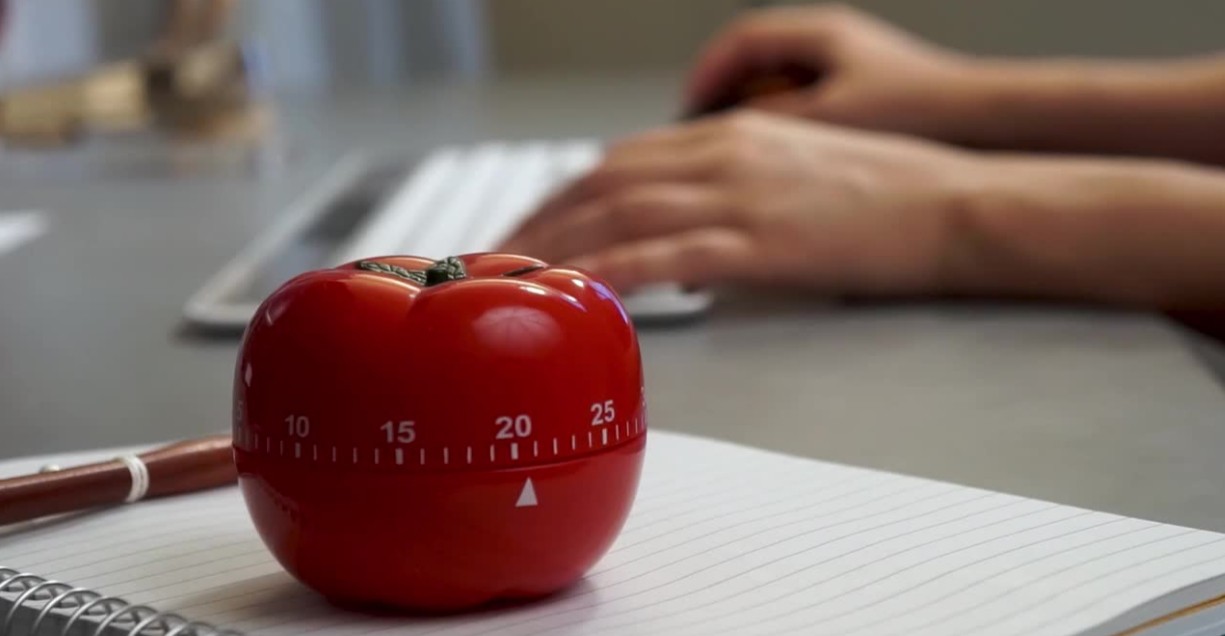Does the Pomodoro Technique work for musicians?
If you’re an artist looking for time management tips, the Pomodoro Technique is a tried and tested method that might just be your answer.
Mastering time management is one of the greatest challenges that an independent artist can face. There’s songwriting, band practices, recording, performing, self-marketing and so much more to balance. It can feel like there simply aren’t enough hours in the day. That’s where the Pomodoro Technique comes in.
This article will teach you all about the Pomodoro Technique, how musicians can use it effectively, and the benefits its can offer to those who incorporate into their daily practices and routines.
Why is time management important for musicians?
If you’re an independent artist, you’re probably no stranger to juggling multiple responsibilities and tasks. Letting it all get on top of you and causing you to burn out completely is the number one thing to avoid, as this can stop your music career in its tracks. This nightmare scenario is hard to avoid without effective time management put in place.
Managing your time carefully helps you to stay organised, prioritise your goals, and make consistent progress in your career. It also helps significantly with avoiding procrastination and the dreaded creative block.
There are numerous approaches to time management, but this article focuses on just one very popular technique.
What is the Pomodoro Technique?
The Pomodoro technique is a time management method developed by Francesco Cirillo in the late 1980s. It involves breaking your work into focused intervals, traditionally 25 minutes long, separated by short breaks. These intervals are known as “Pomodoros”, named after the tomato-shaped timer Cirillo used.
Here’s exactly how it works:
- Choose a task you want to work on
- Set a timer for 25 minutes.
- Work on the task until the timer rings.
- Take a 5-minute break.
- After completing four Pomodoros, take a longer break (15-30 minutes)
How can musicians use the Pomodoro Technique?
Because the Pomodoro Technique is purely based on timings, it can be applied to all number of tasks. This means it can be adapted to suit the various aspects of a musician’s career and daily routine. Here are just some practical ways you can utilise this technique:
Practice sessions
Learning an instrument or practicing with a band can be mentally and physically demanding. It can also be easy to lose motivation, and difficult to avoid frustration or overexertion. Using the Pomodoro Technique can help you to maintain focus without overdoing it. Here’s an example:
- Spend one Pomodoro (25 minutes) on scales or technical exercises
- Take a 5-minute break to stretch, hydrate, or get some fresh air
- Use the next Pomodoro for working on a specific song
Songwriting

Songwriting on demand can be incredibly challenging, but it is widely accepted that you shouldn’t simply wait for inspiration to strike. Writing music is best treated as a disciplined practice, followed by periods of editing and refining.
The Pomodoro technique helps you maintain momentum without feeling drained. Dedicate each Pomodoro to a specific aspect, such as:
- Generating lyric ideas
- Developing chord progressions
- Arranging song structures
Admin tasks
Being an independent artist often means doing pretty much everything yourself. This includes marketing, emails, promoting, creating social media content, managing schedules, and anything else you can think of. None of this involves making music, which can make the admin side of things a pretty dull and uninviting task. Using the Pomodoro Technique can help to break up tasks, making them less daunting to face and ensures they don’t pile up.
- Spend one Pomodoro scheduling posts for the week
- Use another to reply to emails or messages
- Take a longer break to recharge
What are the benefits of the Pomodoro Technique?
As we’ve offered examples of how this popular time management technique can be implemented, we’ve touched upon some benefits. These include things like avoiding doing too much in one go, or breaking up daunting bigger tasks. But, let’s take a deeper dive into the wealth of benefits this method can offer you as a busy independent artist.
Improved focus
Research suggests that adults can focus for up to around 60 minutes. Although, this doesn’t mean that working on something for a solid hour is easy. Working in shorter bursts promotes concentration, and can help you stay in the zone without getting so distracted.
Increased productivity
Breaking tasks into smaller chunks reduces the temptation to procrastinate, and helps you to avoid getting bored and fed up. Switching between different tasks for variety, or simply taking regular breathers, can help you stay on-task and get things done.
Better work-life balance
Overworking yourself can be easy when there’s so much to do and think about. Regular breaks while working helps you to stay energised and allows you to check in with yourself, so you can recognise when you’ve had enough.
Enhanced creativity

Switching between different tasks and taking regular breaks can help you to gain a different perspective on things, and can offer opportunities to uncover new solutions to problems. If you’re struggling to come up with a third verse, or you’re trying to work out the logistics of a string of upcoming gigs, giving your brain a rest can lead you right to the answers you’ve been scrabbling for.
Reduced stress levels
Having a long list of seemingly large and daunting tasks can lead to stress levels going through the roof. Anyone who’s felt overwhelmed before knows that this isn’t an ideal mental state for getting stuff done. Knowing that you only need to get through 25 minutes of working at a time can lower the risk of getting overwhelmed and bring down stress levels generally.
Making time management work for you
While the Pomodoro Technique is very popular for managing tasks and time, it may not suit everyone. Some musicians may prefer to work in longer bursts if they’ve found their stride and got into the sometimes-elusive creative flow. The best approach is to experiment and find what works best for you. Try out longer or shorter Pomodoros, different length breaks, or the order of tasks you do. It can be helpful to start off with tasks you find hardest to tackle, but this could have the opposite desired effect. Whatever works best for you is the way forward.
If you do opt for the Pomodoro Technique, once you’ve tailored it to suit your needs you’ll soon find it becomes an integral part of how you work.
Summing up
Time is one of the most valuable resources for any musician, and managing it effectively can make or break your career. The Pomodoro Technique offers a structured, flexible approach to staying focused and productive, ensuring you make the most of every moment. Whether you’re honing your craft, managing your business, or finding time for creativity, this method can help you achieve a balanced and successful workflow.
Try out different ways of using the technique, and find what fits you best. There’s no point trying to force yourself to stick to a way of working that doesn’t help you – this time management technique is meant to be helpful after all.
